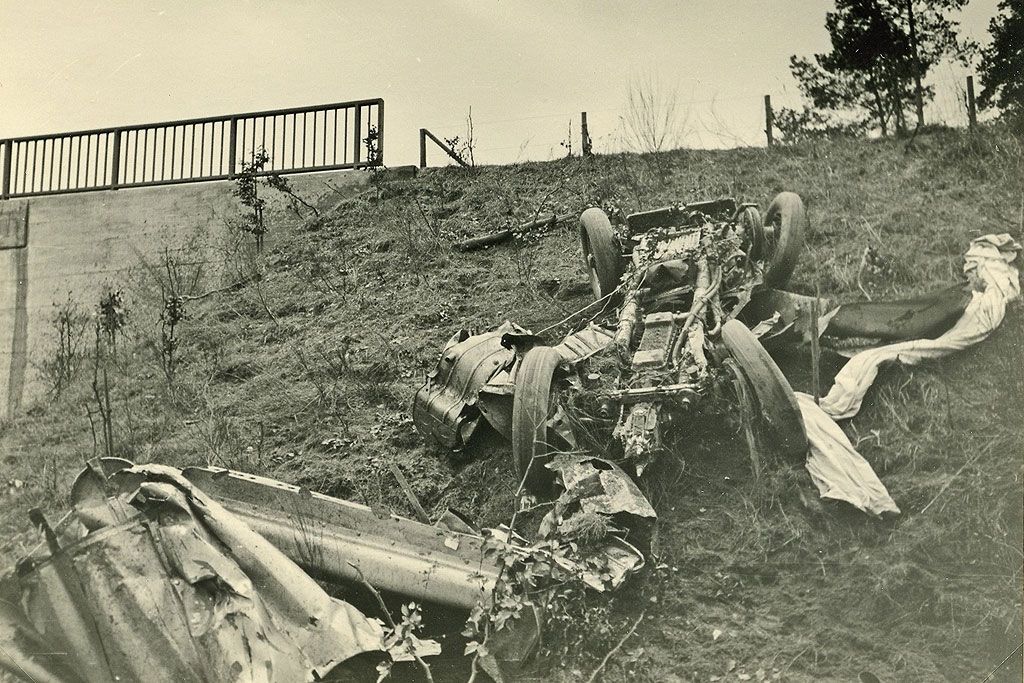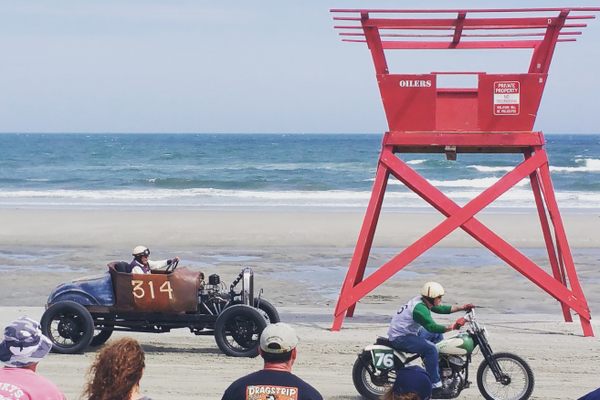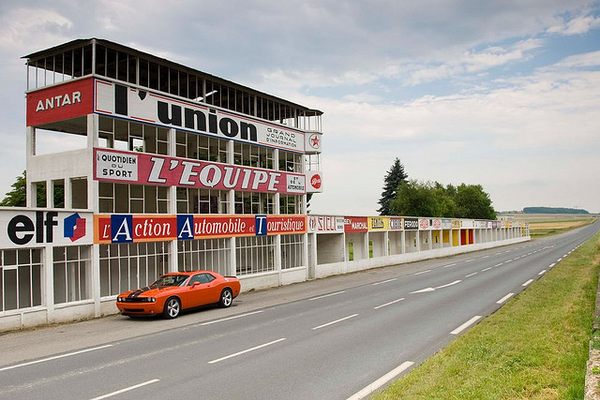About
At a park just off the autobahn between Frankfurt and Darmstadt, a memorial commemorates the place where German racing driver Bernd Rosemeyer died on January 28, 1938, while trying to set a speed record. The memorial is made up of two pieces: a stone pillar honoring Rosemeyer and a wooden cross reminding people to drive at an appropriate speed, even though many stretches of the autobahn have are no speed limits.
Bernd Rosemeyer was born on October 14, 1909, in Lingen. When he was young, he competed in motorcycle races, but switched to car racing in 1935. He became a driver at the Autounion Chemnitz and drove the company's innovative but difficult-to-control racing car. In 1936, Rosemeyer married Elly Beinhorn, one of Germany's first female aerobatic pilots.
On October 28, 1937, Rosemeyer set a speed record when he reached 400 kilometers per hour with a car on the A5, a public autobahn route. This section of the A5 is well suited for such tests, as it is the longest straight section of a motorway in Germany. On January 28, 1938, a comparison was set to take place between the Autounion car and the Mercedes Silver Arrow driven by Rudolf Caracciola. The Mercedes went first, and reached a speed of over 436 kilometers per hour, which is still the speed record on a public traffic way today. When Caracciola got out of his car, he warned Rosemeyer about strong gusts of wind on the route.
Despite the warning, Rosemeyer hoped to regain the record he had just lost. But soon after he pealed off, his car, which was moving at around 429 kilometers per hour, was hit by a gust of wind. The car rolled over several times, and Rosemeyer was thrown from his seat. He died on the side of the road, leaving behind his wife Elly, his son Bernd, and a reputation as a legendary racing driver.
After the war, questions were raised about Rosemeyer's connection to the Nazi party. Although he was never a member of the NSDAP, he was a Hauptsturmführer of the SS at the time of his death. Even if there is no evidence of active service in the SS, Rosemeyer joined the SS in 1933 as the only top German racing driver without any coercion. During his races and award ceremonies, he appeared multiple times with a swastika armband and other Nazi insignia. The Nazi regime also successfully used Rosemeyer as a German hero for propaganda purposes. Adolf Hitler himself gave the eulogy at Rosemeyer's funeral.
The car parks at the site of the accident used to be called Rosemeyer Rest Area, but in 2005 the names were changed to Rastplatz Bornbruch-West and Rastplatz Bornbruch-Ost. Rosemeyer's controversial role in National Socialism is said to have played a major role in the consideration of changing the names of the rest areas.
Related Tags
Know Before You Go
The monument can only be reached via the autobahn, and only if you are driving on the A5 from Frankfurt in the direction of Dortmund.
Since the monument is not far from the motorway, please use the signposted path when visiting the memorial and do not leave it.
Community Contributors
Added By
Published
May 5, 2022





































